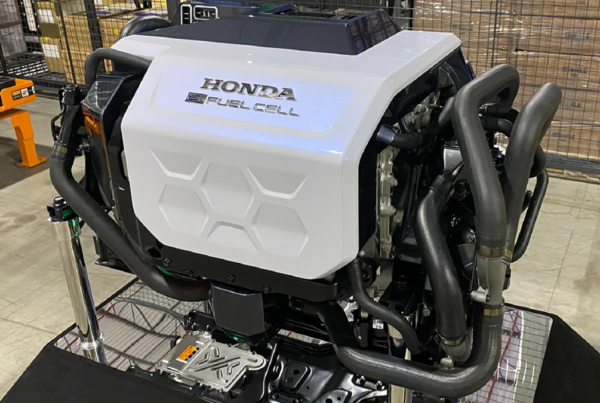
For people living in coastal regions or along rivers, commuting to certain places by water is always going to be quicker than using land-based transit. The fuel-cell-powered NepShuttle is designed to let them continue to do so, while minimizing their carbon footprint.
Currently being developed by French startup NepTech, the NepShuttle was recently the recipient of a CES 2022 Innovation Award.
Plans call for the catamaran to carry up to 150 passengers (depending on layout) along with two crew members and up to four bicycles. It will measure 24 meters long by 8.5 m wide (78.7 by 27.9 ft) and while it can be crewed, it will also be capable of autonomously navigating along its routes, avoiding floating obstacles, and docking itself at its destinations.
The NepShuttle will also feature a hull design that is specially designed to minimize hydrodynamic drag while also producing little in the way of waves or spray. That design will reduce the hull area which is contact with the water, plus it will incorporate a system that continuously dispenses trails of air bubbles that run along the underside of each hull – this “NepAir” technology is claimed to reduce boundary-layer friction as the boat passes through the water.
Additionally, low-profile hydrofoils on the underside of the hulls are claimed to boost stability (and thus lessen the chances of seasickness) when traveling through swells. Unlike conventional foils, they are not designed to allow the boat to rise out of the water at high speeds. Other passenger-comfort features will include a soundproofed cabin, anti-vibration seats and Wi-Fi connectivity.

The NepShuttle’s body will be made of flax fiber, bio-based epoxy resin and recycled plasticNepTech
The watercraft’s twin electric motors will be powered by a couple of lithium batteries, which will in turn be charged by two polymer electrolyte membrane fuel cells. It will have a cruising speed of 35 km/h (22 mph) and a top speed of 40 km/h (25 mph).
Although no exact range figures have been provided, NepTech states that with help from energy- and battery-management systems, the NepShuttle will “match the operational performances of legacy diesel-powered vessels.” Refueling can be performed at a mobile hydrogen fueling station, so the shuttle won’t have to return to a home base every time its fuel cells run low.
And while this may all seem very conceptual, the company has reportedly already trialed the various technologies in a one-seventh-scale demonstrator catamaran. A NepTech representative tells us that plans call for the launch of a full-size NepShuttle to take place sometime in 2023 or 2024. It will initially be used on the Seine River and in the port of Marseille.
Read the most up to date Fuel Cell and Hydrogen Industry news at FuelCellsWorks




